
A fairy is a type of mythical being or legendary creature, generally described as anthropomorphic, found in the folklore of multiple European cultures, a form of spirit, often with metaphysical, supernatural, or preternatural qualities.
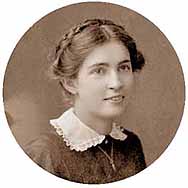
Cicely Mary Barker was the illustrator who created the famous Flower Fairies, in the shape of ethereal smiling children with butterfly wings. As a child, she was greatly influenced by the works of the illustrator Kate Greenaway, whom she assiduously copied in her formative years. Her principal influence, however, which she duly credited, was the artwork of the Pre-Raphaelite Brotherhood.
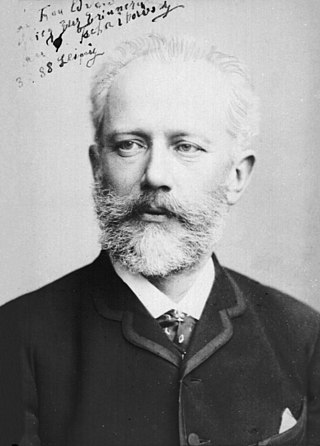
The Nutcracker, Op. 71, is an 1892 two-act classical ballet by Pyotr Ilyich Tchaikovsky, set on Christmas Eve at the foot of a Christmas tree in a child's imagination. The plot is an adaptation of E. T. A. Hoffmann's 1816 short story The Nutcracker and the Mouse King. The ballet's first choreographer was Marius Petipa, with whom Tchaikovsky had worked three years earlier on The Sleeping Beauty, assisted by Lev Ivanov. Although the complete and staged The Nutcracker ballet was not initially as successful as the 20-minute Nutcracker Suite that Tchaikovsky had premiered nine months earlier, it soon became popular.
Cinderella Op. 87, is a ballet composed by Sergei Prokofiev to a scenario by Nikolai Volkov. It is one of his most popular and melodious compositions, and has inspired a great many choreographers since its inception. The piece was composed between 1940 and 1944. Part way through writing it Prokofiev broke off to write his opera War and Peace. The premiere of Cinderella was conducted by Yuri Fayer on 21 November, 1945, at the Bolshoi Theatre, with choreography by Rostislav Zakharov and Galina Ulanova in the title role. Cinderella is notable for its jubilant music, lush scenery, and for the comic double-roles of the stepmother and the two stepsisters, more mad than bad in this treatment.
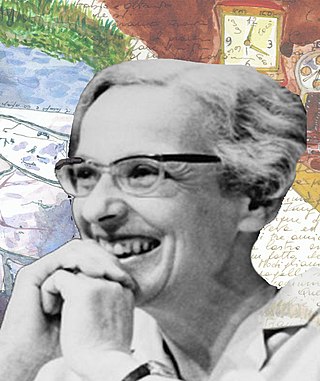
Marie-Louise von Franz was a Swiss Jungian psychologist and scholar, known for her psychological interpretations of fairy tales and of alchemical manuscripts.

The samodiva, samovila or vila, are woodland fairies or nymphs found in South and West Slavic folklore.

Snegurochka (diminutive) or Snegurka, or The Snow Maiden, is a character in Russian fairy tales.
The iele are feminine mythical creatures in Romanian mythology. There are several differing descriptions of their characteristics. Often they are described as faeries, with great seductive power over men, with magic skills and attributes similar to nymphs, naiads and dryads found in Greek mythology.

The youngest son is a stock character in fairy tales, where he features as the hero. He is usually the third son, but sometimes there are more brothers, and sometimes he has only one; usually, they have no sisters.
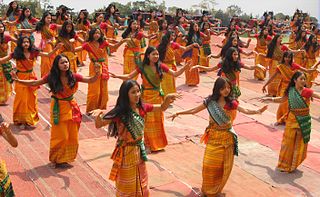
The Bagurumba is a traditional dance of the indigenous Boro people living in the State of Assam and North East India. It is also called '''butterfly dance''' because it's personification of movements of butterflies and birds. In this occasion, only the Bodo women perform the dance, wearing their colourful traditional attire dokhna, jwmgra (fasra) and aronai. The dance is accompanied by handmade percussion instruments such as 'kham', sifung, jota, serja, and gongwna, tharkha.

Tinker Bell is a 2008 American animated film and the first installment in the Disney Fairies franchise produced by DisneyToon Studios. It is about Tinker Bell, a fairy character created by J. M. Barrie in his 1904 play Peter Pan, or The Boy Who Wouldn't Grow Up, and featured in the 1953 Disney animated film, Peter Pan and its 2002 sequel Return to Neverland. Unlike Disney's two Peter Pan films featuring the character, which were produced primarily using traditional animation, Tinker Bell was produced using digital 3D modeling. The film was released on DVD and Blu-ray by Walt Disney Studios Home Entertainment on October 28, 2008. A sequel, Tinker Bell and the Lost Treasure, was released in 2009.
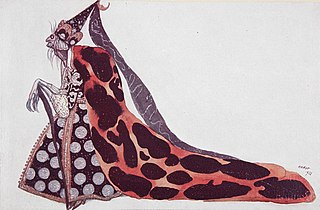
The Wicked fairy is the antagonist of Sleeping Beauty. In some adaptations, she is known as Carabosse. The most notable adaptation of the character is Maleficent, a Disney villain who appeared in various Disney media, beginning with the 1959 Walt Disney film Sleeping Beauty.
Bineshwar Brahma was the president of the Bodo Sahitya Sabha in Assam, India. He was born in a small village of Bhatarmari in Kokrajhar. He was the son of Late Taramoni Brahma and Late Sanathi Brahma.

Zenaida Yanowsky, Lady Keenlyside, is a French-born Spanish ballet dancer and a former principal dancer with the Royal Ballet in London.
Pearlie is an animated comedy series based on the children's book series Pearlie the Park Fairy by Wendy Harmer. Pearlie is a co-production between Sticky Pictures and Nelvana Limited. The series aired on Network Ten in Australia, YTV in Canada, Pop Girl in the United Kingdom, and Qubo in the United States. 26 episodes were produced.

Tinker Bell is an animated fantasy film series based around the character Tinker Bell, produced by DisneyToon Studios as part of the Disney Fairies franchise after producing a number of direct-to-video Winnie the Pooh films. Voices of Mae Whitman, Lucy Liu, Raven-Symoné, America Ferrera, Kristin Chenoweth and Pamela Adlon are featured in the films. Six feature films and one TV special were produced: Tinker Bell, Tinker Bell and the Lost Treasure, Tinker Bell and the Great Fairy Rescue, Secret of the Wings,Pixie Hollow Games, The Pirate Fairy, and Tinker Bell and the Legend of the NeverBeast. The series is a spin-off of and prequel to Peter Pan. Originally developed as a direct-to-video franchise, the series was theatrically released from its third film onwards.

The Anjana are one of the best-known fairies of Cantabrian mythology. These female fairy creatures foil the cruel and ruthless Ojáncanu. In most stories, they are the good fairies of Cantabria, generous and protective of all people. Their depiction in the Cantabrian mythology is reminiscent of the lamias in ancient Greek mythology, as well as the xanas in Asturias, the janas in León, and the lamias in Basque Country, the latter without the zoomorphic appearance.
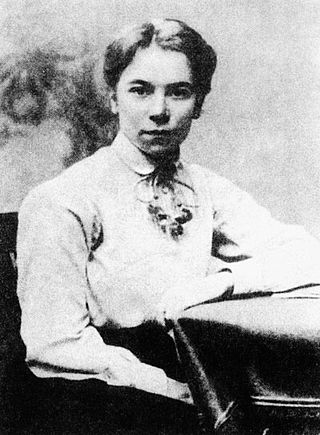
Elena Genrikhovna Matyushina was a Russian Futurist painter, playwright, poet, and fiction writer. Her career spanned the transitional period between Russian Symbolism and Futurism.
Sally J. Smith is an American artist who creates fairy house sculptures and land art. She is based in Westport, New York near Lake Champlain in the Adirondack Mountains. She grew up in Shelburne, Vermont and previously worked as a watercolorist and illustrator.














